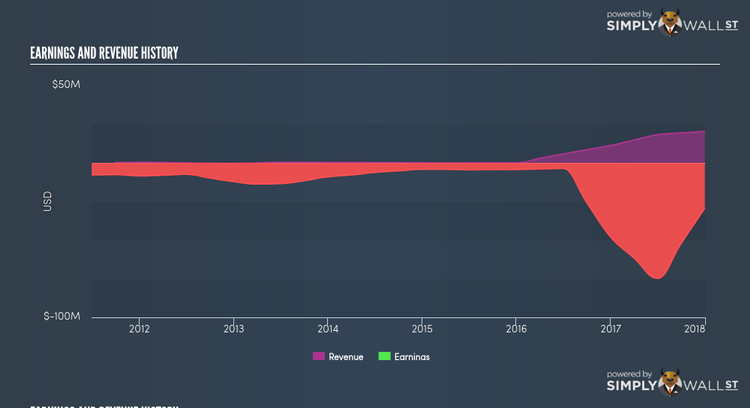Where Peninsula Energy Limited (ASX:PEN) Stands In Earnings Growth Against Its Industry

After reading Peninsula Energy Limited’s (ASX:PEN) most recent earnings announcement (31 December 2017), I found it useful to look back at how the company has performed in the past and compare this against the latest numbers. As a long-term investor I tend to focus on earnings trend, rather than a single number at one point in time. Also, comparing it against an industry benchmark to understand whether it outperformed, or is simply riding an industry wave, is a crucial aspect. Below is a brief commentary on my key takeaways. View our latest analysis for Peninsula Energy
Did PEN beat its long-term earnings growth trend and its industry?
For the most up-to-date info, I use the ‘latest twelve-month’ data, which annualizes the latest 6-month earnings release, or some times, the latest annual report is already the most recent financial data. This enables me to analyze various companies in a uniform manner using new information. For Peninsula Energy, its most recent earnings (trailing twelve month) is -US$29.27M, which, in comparison to the prior year’s level, has become less negative. Since these figures are somewhat myopic, I have estimated an annualized five-year value for Peninsula Energy’s net income, which stands at -US$16.56M. This shows that, Peninsula Energy has historically performed better than recently, while it seems like earnings are now heading back in the right direction again.
We can further assess Peninsula Energy’s loss by looking at what the industry has been experiencing over the past few years. Each year, for the past half a decade Peninsula Energy’s top-line has increased by 66.29% on average, implying that the company is in a high-growth period with expenses shooting ahead of revenues, leading to annual losses. Viewing growth from a sector-level, the Australian oil and gas industry has been increasing growth, more than doubling average earnings over the previous year, and a strong 11.17% over the previous five years. This shows that any uplift the industry is profiting from, Peninsula Energy has not been able to realize the gains unlike its industry peers.
What does this mean?
Peninsula Energy’s track record can be a valuable insight into its earnings performance, but it certainly doesn’t tell the whole story. With companies that are currently loss-making, it is always hard to predict what will happen in the future and when. The most useful step is to assess company-specific issues Peninsula Energy may be facing and whether management guidance has dependably been met in the past. I suggest you continue to research Peninsula Energy to get a more holistic view of the stock by looking at:
Future Outlook: What are well-informed industry analysts predicting for PEN’s future growth? Take a look at our free research report of analyst consensus for PEN’s outlook.
Financial Health: Is PEN’s operations financially sustainable? Balance sheets can be hard to analyze, which is why we’ve done it for you. Check out our financial health checks here.
Other High-Performing Stocks: Are there other stocks that provide better prospects with proven track records? Explore our free list of these great stocks here.
NB: Figures in this article are calculated using data from the trailing twelve months from 31 December 2017. This may not be consistent with full year annual report figures.
To help readers see pass the short term volatility of the financial market, we aim to bring you a long-term focused research analysis purely driven by fundamental data. Note that our analysis does not factor in the latest price sensitive company announcements.
The author is an independent contributor and at the time of publication had no position in the stocks mentioned.

 Yahoo Finance
Yahoo Finance 
